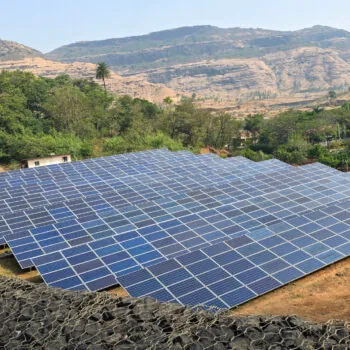The European Commission will release the first ever European climate law on Wednesday 4th March 2020. Beyond the hype and spin, at its core it is European Commission President Ursula von der Leyen and Executive Vice-President Frans Timmermans’ bet to manage turbulent politics. While it might turn the tide, it will not be the EU’s “get out of jail free” card.
Keeping the Council on their side
The European Commission could continue to propose low-key, transformational policies. The Governance of the Energy Union and Climate Action regulation, for instance, have elements that a climate law would normally include. The regulation altered the way member states plan for climate action and shook up the power distribution between the Commission and the Member states. But this flew largely, and purposefully, under the radar.
Instead of staying low-key though, the Commission is going all-out for the climate law. The leadership has chosen the highly public and anticipated road of the first 100 days. The bar is even higher now that climate activist Greta Thunberg has the rare privilege of addressing all the Commissioners just before they adopt the European climate law.
The Commission may have locked itself into a trap. The theatrics are such that business as usual will be considered a failure. The climate law must impress to succeed.
Why would the Commission do that?
The European Green Deal is a project that member states can back. Its weakness is timing: the Commission will only propose measures that will be popular among member states next year.
The European Green Deal is a wide-ranging project that brings ideas from European political groups and member states under one roof. It includes the shiny border carbon adjustment mechanism supported by France and Poland, the review of the EU’s 2030 climate targets to satisfy the most ambitious member states and even a debate on the Stability and Growth Pact as requested by Italy and Spain.
Meanwhile, the Commission is trying to balance politics. It is putting proposals on the table where more progressive member states can shine (the European climate law) and more reluctant member states can get support from (the Just Transition Fund).
The Commission needs to work with the most progressive member states, as the new leadership already alienated a handful. For example, the Commission stated they will release the impact assessment for enhanced 2030 climate targets in September. These countries are calling for a release as soon as possible, to be ready for the EU-China Summit in September.
The climate law is the Commission’s attempt to keep progressive member states on its side in the short-term, until leaders strike a new balance based on enhanced 2030 targets.
Winning the Parliament over
Ursula von der Leyen took radical measures to secure a working majority in the European Parliament.
She appointed figures from the three largest political groups as her deputies. While common in coalition governments in member states, it’s extraordinary on the EU scene.
The climate law is the second act in this offensive charm. She needs to get a "well done" from the European Parliament so the Commission goes all out. This is an attempt to show that the Commission is responsive to the requests of the European Parliament.
The Parliament will have a field day. With the climate law, Members of the European Parliament can score political points without upsetting domestic industries with stricter targets. It can work: political groups in the Parliament have embarked on a “who’s the greenest” contest. Parliamentarians have tabled no less than five competing resolutions declaring a climate emergency in plenary.
Doing what the Commission does best, with a twist
The climate law is likely to include measures playing on the Commission’s strengths, with a twist.
The FT has already reported the twist. The Commission wants to set targets every five years, with the European Parliament and member states only able to appeal. Member states and Parliament will hate it. Even the more pro-European and pro-climate action countries want to keep oversight over climate policies. The Parliament has also been a fierce guardian of its constitutional rights and is unlikely to shift this power into the Commission’s hands. The technique suggested is controversial, but it makes a fantastic headline for the Commission. Putting it on the table shifts the burden to the European Parliament and member states.
The climate law is likely to:
- Shift the EU's climate governance from a legal approach to a more political framework. Is it robust enough to deliver change in member states?
- Enshrine the objective of climate neutrality by 2050 into law. Will it have a trajectory? Will it require 95% greenhouse gas cuts and the remaining 5% in carbon sinks?
- Include a new power balance with rights and responsibilities. Does it give new rights and duties to member states?
- Include a “do no harm” clause so new initiatives will have to be compatible with climate neutrality. But who will check?
- Align the update of the EU climate targets with the international timeline (with a five-year ambition cycle). Is the Commission suggesting the EU should have a 2035 target?
- Elevate the importance of climate resilience and adaptation. But what is new?
- Touch on finance, the EU’s new climate success story since the agreement on the EU taxonomy. Will the law require a stress test of all new infrastructure against a given temperature?
Is it enough to be a “good” climate law? Others have set their benchmarks either by looking at national climate laws or looking at what should be done specifically at EU-level. It seems clear the Commission is trying to capture the imagination with its competence twist. The rest of the law is more likely to produce effects in the short-term, while the competency debate might spill over in the upcoming Future of Europe conference.
It is not the EU’s “get out of jail free” card
The EU is about to adopt and submit its long-term climate strategy to the UNFCCC. Frans Timmermans hopes that the strategy and the climate law will be enough for the EU to show its progress in implementing the Paris Agreement.
It will not fly.
The climate law can help to close governance gaps, but it will not solve the Commission’s problem for the annual COP26 in November. The EU has been showcasing its work on climate neutrality since COP24 in Katowice. As we now approach COP26, this will seem light to partners.
The EU’s legislative framework is part of the EU’s credibility internationally. But COP26 requires more. COP25 was a failure. Now countries should put forward 2030 targets well before COP26. The EU has already submitted its 2030 targets, well before the Paris Agreement. Five years later, the EU is still to communicate an update. It needs to show that the ratcheting up mechanism at the heart of the Paris Agreement works.
The EU can shape international geopolitics with the EU-China Summit of September 2020 as it can lead the diplomatic movement ahead of COP26. What would be better for a geopolitical Commission?
Updating the EU Nationally Determined Contribution is more difficult than putting the climate law on the table. But there is no way around it.


